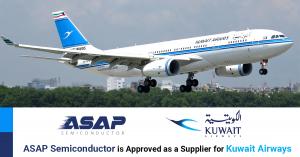
The ultralight aircraft market is estimated to reach US$ 9.7 billion by 2031, growing at a CAGR of 6% during the forecast period.
PORTLAND, OREGON, UNITED STATES, November 22, 2023 /EINPresswire.com/ — According to a new report published by Allied Market Research, titled, “Ultralight Aircraft Market,” The ultralight aircraft market was valued at $5.6 billion in 2021, and is estimated to reach $9.7 billion by 2031, growing at a CAGR of 6% from 2022 to 2031.
Application of ultralight aircraft in future commutation is bolstering business opportunities. Advancements in material technology, electronic components, and manufacturing technologies are expected to play a vital role in shaping future prospects of the ultralight aircraft market penetration. Discovery of ultralight alloys is anticipated to eventually improve operational efficiency of ultralight aircraft, providing longer flight range. Mature electronics and battery systems are expected to replace redundant propulsion system, ensuring environmentally friendly operations and additive manufacturing allowing designers to improve aerodynamics and an aircraft.
Asia-Pacific dominated the ultralight Aircraft industry in terms of growth, followed by North America, Europe, and LAMEA. The U.S. dominated the market share in 2020.
Get inside scoop of the report, request sample – https://www.alliedmarketresearch.com/request-sample/5788
Here are some of the key advantages of ultralight aircraft:
Affordability:
Ultralight aircraft are generally more affordable than traditional general aviation aircraft. The lower cost makes flying more accessible to a broader range of individuals who may be interested in recreational flying.
Lower Operating Costs:
Ultralights are often designed with simplicity and efficiency in mind. Their lightweight construction usually results in lower fuel consumption and maintenance costs compared to heavier aircraft, making them more economical for pilots on a budget.
Ease of Operation:
Many ultralight aircraft are designed to be easy to fly, with simplified controls and fewer complex systems. This makes them more approachable for novice pilots and those who want a straightforward flying experience.
Short Takeoff and Landing (STOL) Capability:
Ultralights, especially those with STOL design features, can take off and land in shorter distances compared to larger aircraft. This flexibility allows pilots to operate from smaller airstrips, opening up more options for recreational flying.
Portability and Storage:
Due to their smaller size and lighter weight, ultralights are often easier to transport and store. Some models can be disassembled or folded for convenient trailering, allowing pilots to fly from different locations without the need for a dedicated hangar.
Recreational Freedom:
Ultralights provide a sense of freedom and adventure, allowing pilots to explore the skies in a more open and unencumbered way. The open cockpit design of many ultralights enhances the connection with the surrounding environment.
Minimal Regulatory Requirements:
In many jurisdictions, ultralight aircraft are subject to less stringent regulatory requirements compared to larger aircraft. This can simplify the process of obtaining a pilot’s license and aircraft registration.
Customization and DIY Appeal:
Ultralights often appeal to those who enjoy building and customizing their aircraft. Kits and plans are available for enthusiasts who want to construct their ultralight, adding a DIY aspect to the aviation hobby.
Low Environmental Impact:
The lightweight design of ultralight aircraft generally results in lower fuel consumption and emissions, contributing to a smaller environmental footprint compared to larger, more fuel-intensive aircraft.
Training and Skill Development:
Ultralights can provide an excellent platform for pilot training, allowing individuals to gain flying experience and develop basic aviation skills before transitioning to larger and more complex aircraft.
Community and Camaraderie:
Ultralight flying often fosters a sense of community among enthusiasts. Events, airshows, and fly-ins dedicated to ultralights provide opportunities for pilots to connect, share experiences, and enjoy the camaraderie of the aviation community.
The ultralight aircraft market share holds a great potential backed by the rise in global expenditure toward sports and recreational activities. Attributes such as simple mode of operation and minimal regulatory limitations toward owning and operating an ultralight aircraft is one of the major market accelerators. Research and development by major companies such as Airbus to develop electric ultralight aircraft such as e-fan is one of the primary driving factors. Rise in global population and demand to commute effectively is one of the growing logistics concerns across the globe.
Leading Company / Group
AutoGyro
Pilatus Airraft Ltd.
Pipistrel
Textron Inc.
VOLOCOPTER GMBH
Evektor
P&M Aviation
Legend Aero
Vulcanair
Cirrus Aircraft
To Purchase this Premium Report – https://www.alliedmarketresearch.com/ultralight-aircraft-market/purchase-options
The ultralight aircraft market industry is segmented on the basis of technology, propulsion, takeoff, end use, and region. By technology, it is categorized into manned and unmanned. The propulsion segment is further sub divided into conventional propulsion and electric & hybrid propulsion. Depending on takeoff, the market is fragmented into commercial takeoff and landing (CTOL) and vertical takeoff and landing (VTOL). The end use segment is bifurcated into civil and commercial & military. Region wise, the market is analyzed across North America, Europe, Asia-Pacific, and LAMEA.
Factors such as low cost of acquisition and maintenance, and absence of regulatory norms limiting civilians to fly an ultralight aircraft in certain regions. Placement of ultralight aircraft in recreational and sports activities are backed by increasing expenditure trends by civilians across the globe to support business opportunities within the region. Rise in disposable income across the globe and increasing delays in delivery of conventional aircraft is expected to impact ultralight aircraft in a positive manner to a certain extent. Rise in sports, tourism, and recreational activities post COVID-19 is supporting business opportunities within the segment. In Q1 2022, there were an expected 117 million foreign visitors, up from 41 million in Q1 2021, an increase of 182% year over year. About 47 million of the additional 76 million overseas arrivals were counted in March 2022.
Make a Purchase Inquiry – https://www.alliedmarketresearch.com/purchase-enquiry/5788
KEY FINDINGS OF THE STUDY
By technology, the unmanned segment leads the ultralight aircraft market during the forecast period.
By propulsion, the electric and hybrid segment leads the market during the forecast period.
By takeoff, the VTOL segment is expected to grow at lucrative growth rate during the forecast period (2022-2031).
By end use, the military segment leads the market during the forecast period.
Asia-Pacific is anticipated to exhibit the highest CAGR during the forecast period.
Similar Reports We Have on Aircraft Industry:
Aircraft Lighting Systems Market – https://www.alliedmarketresearch.com/aircraft-lighting-systems-market
Aircraft Lighting Market – https://www.alliedmarketresearch.com/aircraft-lighting-market-A06273
Aircraft Actuators Market – https://www.alliedmarketresearch.com/aviation-actuator-system-market
David Correa
Allied Market Research
+ +1 800-792-5285
email us here
Visit us on social media:
Facebook
Twitter
LinkedIn
![]()
Originally published at https://www.einpresswire.com/article/670244994/ultralight-aircraft-market-size-and-opportunity-analysis-2031



